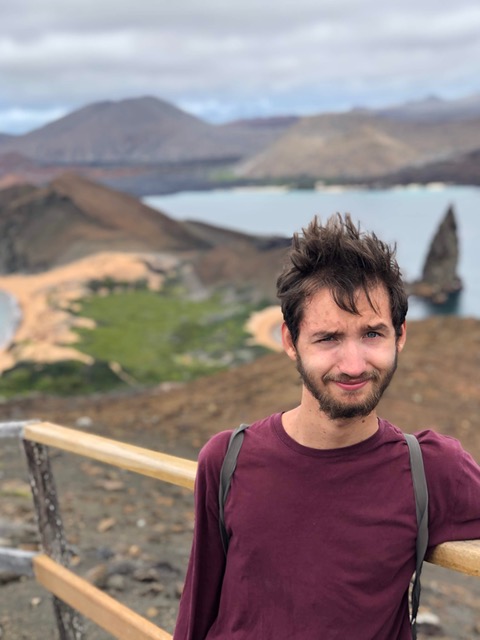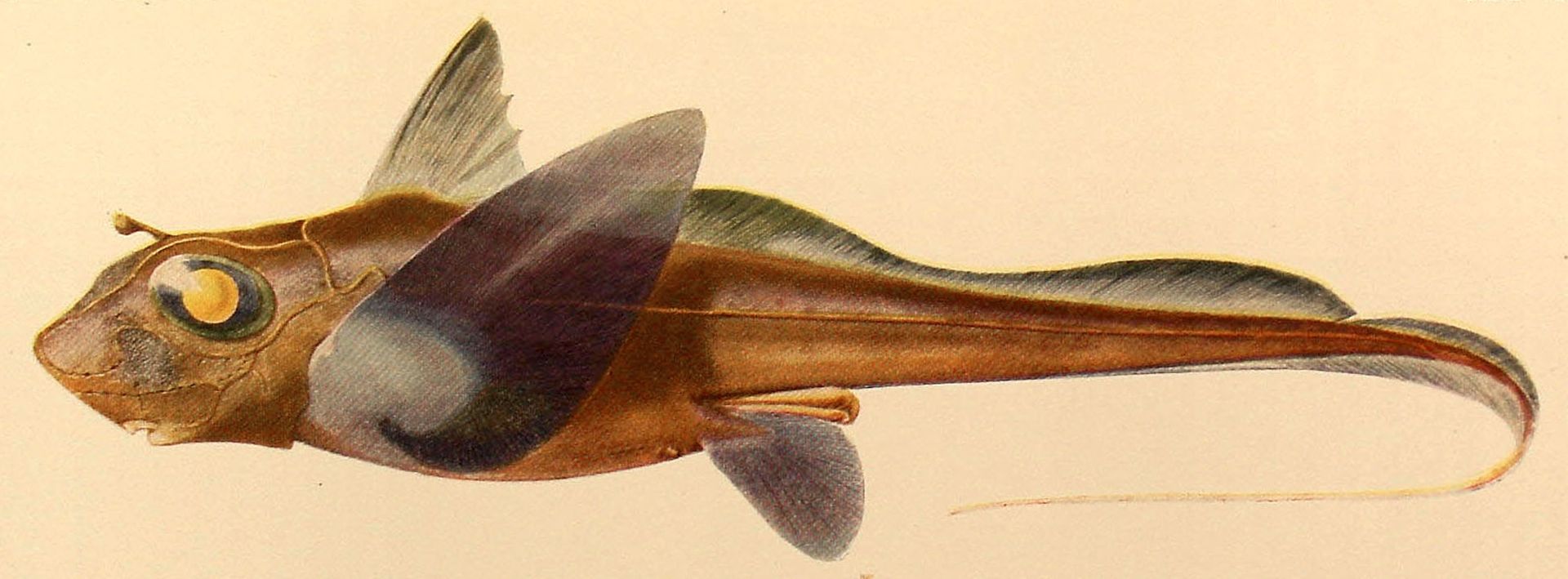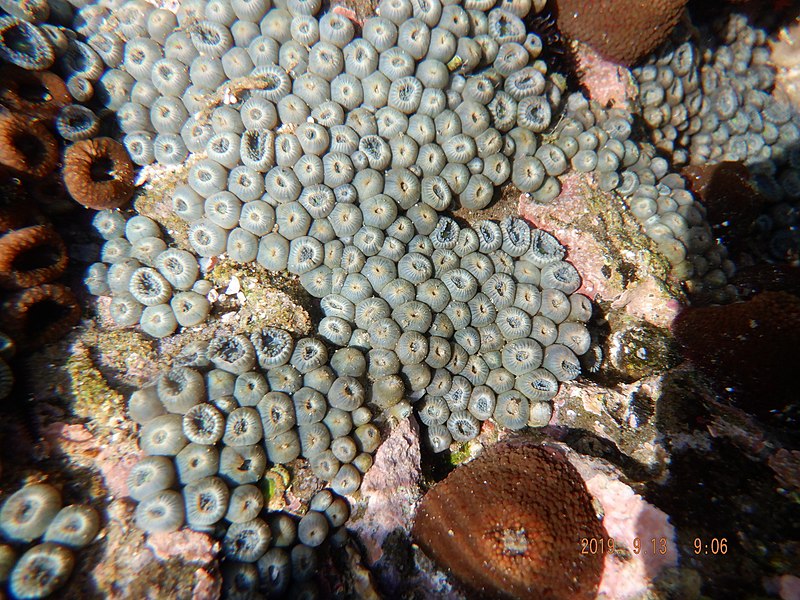“You’re not always able to make a huge impact, but at least you can make a dent.”

Kai Medina learned how to add content to Wikipedia pages as a student in Dr. Randi Rotjan’s marine biology course this Spring. Since then, he has remained an active editor on Wikipedia, adding content, photos, and field recordings to pages related to his ecology studies. In an interview with Wiki Education, Kai walks us through becoming a Wikipedian.
What page(s) did you work on during class, and why did you choose to write on that topic?
So for marine bio one day we were given a long excel sheet where we could pick a marine creature, and that would be our topic. Each of these were looked into to make sure the resources were out there to help create or expand the Wikipedia page. We were also allowed to find one page on our own if we thought there was enough out there to meet the requirements. The night before I chose, I happened to mention the project over a phone call with my family. My dad got all excited and said that he’d make a T-shirt of whatever I wrote on. So the next steps forward were clear – I had to find the ugliest, stupidest looking fish in the sea. Turns out most of the fun ones didn’t have a ton of info out there, so I checked out the list of marine creature stubs on Wikipedia and stuck with the large-eyed rabbitfish. The thing’s a chimera with a poisonous spine after all, so that’s pretty neat. This still remains one of the largest pages I’ve worked on, and I’m rather proud of it. I gotta get that T-shirt going on Redbubble now huh? (Editor’s note: He did.)

What was your first reaction when you learned you were going to be adding to Wikipedia? / How do you feel the assignment compared to a traditional assignment?
I thought the Wikipedia project in class was a neat thing and definitely better than a lot of assignments we could have been working on instead, you know? I liked that this idea was more beneficial to… I guess the sciences and for all the large-eyed rabbitfish obsessed individuals out there, as compared to just having a grade on a paper. My professor would say how because of the resources from our university, we could bring information and sources to the public eye that not everyone has access to. Inspirational stuff.
Looks like you’ve remained active on Wikipedia! How is it going so far? Do you have any specific goals for your editing?
So it’s been about eight months since I finished the fish page, and I’m still editing today! To us overworked college students there’s always that mental debate between relaxing and feeling like you should be doing something useful. So sometimes it’s nice to just chill and find some random pages that could use a hand (hummingbirds definitely can still be worked on if anyone needs a lift off point). You learn something neat every now and then too. The Andean hillstar hummingbird’s limiting factor is the number of caves around and how cavelike they are. Painters in the “brave new world” era would use art to portray North/South American wealth to rulers back home. And the Swedish sea monster known as Gryttie might have just been a sea cow who wandered off the trail (but don’t tell that to the robot searching for it).

I’m currently studying abroad in Quito, Ecuador at the moment in an ecology program, and what’s neat is how I can apply what I learn to this little Wikipedia side project. We’ll talk about something in class and I can study for it by seeing what info I can scrape up for its page. Sometimes I’ll even see creatures such as certain species of bat, and the page for it doesn’t have a photo, so I can contribute that way (Editor’s note: Check out the photos that Kai contributed to the chestnut short-tailed bat page). Any photos that I have that I’m not gonna use for anything else or if they originated from a cause I like, and of course had potential to be relevant/helpful to a page, I could upload to the Wikimedia Commons. Now that photo won’t die in a hard drive somewhere. Worst case it wasn’t gonna be seen anyway (“Magnetic Pulse” by Our Debut Album type of philosophy here), and now it could possibly help something on some page. Nobody tell Wikipedia that I’m on the digging bar page, shhh. It’s also fun to occasionally Google my name and see if any news articles picked up my photos (Wikimedia Commons photos can be used by anyone as long as the use falls within Creative Commons rules/regulations). Because of this work I had photos show up in an Australian gospel site, a scientific article on bat teeth, and even on one where some lady almost stole a baby!

If any teachers out there are reading this, from the student’s perspective I really recommend getting a project like this going on Wikipedia! It doesn’t have to be marine bio either, I noticed one of the pages I worked on got added to class page for a LGBTQ+ project at a university in California which is pretty great. It’s very straightforward to add to a page, there’s proper training offered through Wiki Education, and good sources are not all that hard to find via Google, Google scholar, and university library sites. Students need to have at least some basis of whatever the topic is that their learning in class, then they become the expert on a very specific topic. The project gives them experience when it comes to valuable research and proper citations for the future. It’s a bit different than most papers, like Haleigh had to say, as there is no argument to be made, only facts to be stated. I feel this could prove very useful, especially for instances within scientific papers or journalism, as well as improving your ability to avoid bias.
All in all, I think anyone could agree that it’s nice to write something and have it be read/used somewhere one day. My mom would always say, “you’re not always able to make a huge impact, but at least you can make a dent.”
Interested in incorporating a Wikipedia writing assignment into an upcoming course? Our free resources and student trainings help you do it. Read more or get started by visiting teach.wikiedu.org.
